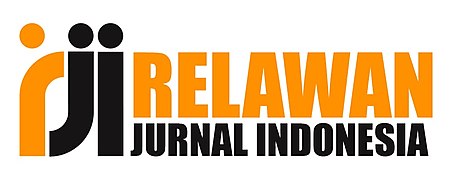Employee Attendance System Using Rapid Application Development Method Based on Location Based Service
Abstract
Employee attendance is the main benchmark in assessing employee performance and discipline, as well as providing important data for company management. The use of information technology, such as computers, has helped companies make decisions effectively. However, some companies face obstacles in the employee attendance process, especially in manual or finger print situations, and absence management. By utilizing GPS technology or similar LBS technology to detect employee presence. In this context, mobile technology, especially smartphones, has an important role in providing fast and accurate access to information. The RAD method is used in making application prototypes with repeated iterations, enabling fast development and efficient improvements. The aim of this research is to apply the LBS method to support absenteeism. This application allows employees to take attendance on time via their smartphones, with attendance data directly stored in the company's servers and databases. In addition, the Global Positioning System (GPS) feature allows tracking the location of employees who are on external service. It is hoped that the results of this research can help companies minimize the problem of employee absenteeism, increase the efficiency of work processes, and provide faster and more accurate access to information. The RAD and LBS methods have proven their effectiveness in overcoming absenteeism problems and speeding up work flow. Apart from that, this research also underlines the importance of employee discipline in achieving company goals.
References
I. Ahmad, S. Samsugi, and Y. Irawan, “Penerapan Augmented Reality Pada Anatomi Tubuh Manusia Untuk Mendukung Pembelajaran Titik Titik Bekam Pengobatan Alternatif,” J. Teknoinfo, vol. 16, no. 1, p. 46, 2022, doi: 10.33365/jti.v16i1.1521.
A. Aisyah, D. Permata Sari, and K. Kusumanto, “Perancangan Aplikasi Presensi Dosen Real Time dengan Metode Global Positioning System (GPS) dan Location Based Service (LSB) Berbasis WEB di Jurusan Teknik Elektronika Politeknik Negeri Sriwijaya,” J. Locus Penelit. dan Pengabdi., vol. 1, no. 5, pp. 341–347, 2022, doi: 10.36418/locus.v1i5.73.
Deni Murdiani and Muhamad Sobirin, “Perbandingan Metodologi Waterfall Dan Rad (Rapid Application Development) Dalam Pengembangan Sistem Informasi,” J. Inform. Teknol. dan Sains, vol. 4, no. 4, pp. 302–306, 2022, doi: 10.51401/jinteks.v4i4.2008.
M. I. Hanafri, M. Iqbal, and A. B. Prasetyo, “Perancangan Aplikasi Interaktif Pembelajaran Pengenalan Komputer Dasar Untuk Siswa Sekolah Dasar Berbasis Android,” J. Sisfotek Glob., vol. 9, no. 1, 2019, doi: 10.38101/sisfotek.v9i1.237.
M. S. Janry Haposan U. P. Simanungkalit, S.Si., “KONSEP DASAR SISTEM INFORMASI ( Review ),” Lect. Notes Sist. Inf., pp. 1–10, 2012.
N. Qois and Y. Jumaryadi, “Implementasi Location Based Service Pada Sistem Informasi Kehadiran Pegawai Berbasis Android,” Sistemasi, vol. 10, no. 3, p. 550, 2021, doi: 10.32520/stmsi.v10i3.1369.
A. Roihan, P. A. Sunarya, and A. S. Rafika, “Pemanfaatan Machine Learning dalam Berbagai Bidang: Review paper,” IJCIT (Indonesian J. Comput. Inf. Technol., vol. 5, no. 1, pp. 75–82, 2020, doi: 10.31294/ijcit.v5i1.7951.
A. Roihan, A. A. Wisanto, Y. Sulaeman, F. M. Nur, and S. Williandi, “Implementasi Metode Realtime, Live Data Dan Parsing JSON Berbasis Mobile Dengan Menggunakan Android Studio Dan PHP Native,” J. Teknol. Inf., vol. 5, no. 2, 2019.
M. A. R. Sikumbang, R. Habibi, and S. F. Pane, “Sistem Informasi Absensi Pegawai Menggunakan Metode RAD dan Metode LBS Pada Koordinat Absensi,” J. Media Inform. Budidarma, vol. 4, no. 1, p. 59, 2020, doi: 10.30865/mib.v4i1.1445.
Subiantoro and Sardiarinto, “Perancangan Sistem Absensi Pegawai Berbasis Web,” J. Swabumi, vol. 6, no. 2, pp. 184–189, 2018.
A. Utomo, Y. Sutanto, E. Tiningrum, and E. M. Susilowati, “Pengujian Aplikasi Transaksi Perdagangan Menggunakan Black Box Testing Boundary Value Analysis,” J. Bisnis Terap., vol. 4, no. 2, pp. 133–140, 2020, doi: 10.24123/jbt.v4i2.2170.
Angelyn, J., & Putri, R. N. (2021). Diagnosis System Design of Depression and Anxiety with NAÏVE BAYES Method. Journal of Applied Business and Technology, 2(2), 92–97.
Susanto, E., Gustientiedina, G., & Siddik, M. (2024). Application of the Forward Chaining Method in Diagnosing Tomato Fever. Journal of Applied Business and Technology, 5(1), 41–50. https://doi.org/https://doi.org/10.35145/jabt.v5i1.143 1.0
Copyright (c) 2024 Journal of Applied Business and Technology

This work is licensed under a Creative Commons Attribution-ShareAlike 4.0 International License.



















